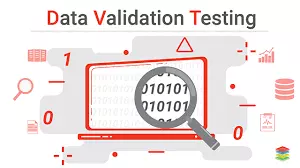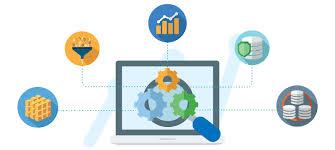As a tester, you might be thinking: It’s enough to create test scripts with test cases, so why bother so much about something trivial like test type data? However, when tested they are actually using a very large amount of data. The data used in the test describes the prerequisite conditions of the test and is the means for the testers to affect the software. But what is test data really? How to create test data? Let’s find out in this article!
What is the test data in Software Testing?
Test data in Software Testing are input data provided to a software program during test execution. It represents the data affected or affected by the software execution during the test. Is test data used both for positive testing to verify that functions produce the expected results? And is used for both negative testing to check the software’s ability to handle unusual, special, or unexpected inputs. Poorly designed test data may not check all possible test scenarios, which would hamper the quality of the software.

What is creating test data? Why should test data be generated before the test is executed?
Everyone knows that testing is a process that generates and consumes large amounts of data. The data used in the test describe the initial conditions for a test and represent the means by which the tester affects the software. It is an important part of most functional testing.
Depending on your test environment, you may need to generate test data (most cases) or at least one suitable test data for your test cases.
Usually, test data is created synchronously with the test case it is intended to use.
Test data can be generated in several ways:
- Handmade
- Batch copy of data from production to test environment
- Batch copy of test data from legacy client systems
- Automated test data creation tool
Below is a description of some of the test types with some suggestions for their test data needs.
Test data for white box testing (White testing)
In the Check white box, test data management is derived from directly verifying the code under test. Test data can be selected by taking into account the following:
- It is desirable to cover as many branches as possible; test data can be generated such that all branches in program source code are checked at least once.
- Test path: all paths in program source code are checked at least once – preparation of test data can be done to cover as many cases as possible
- Negative API testing:
- The test data may contain invalid parameter types used to call different methods
- The test data may include invalid argument combinations used to invoke a program’s methods

Test data to test performance
Performance testing is a type of test that is performed to determine how quickly the system responds to a specific workload. The goal of this type of testing is not finding the error, but eliminating bottlenecks. An important aspect of Performance Testing is that the sample data set used should be very close to the ‘real’ or ‘live’ data used in the production process. The following question poses: ‘Okay, it’s fine to test with real data, but how do I get this data?’ The answer is quite simple: from the people who know it best – the customer. They can provide some data they already have or, if they don’t have an existing dataset, they can help by giving you feedback on how real-world data might look like. .d project maintenance test you can copy data from production environment into test bed. One good practice is to anonymize (tamper with) sensitive customer data like Social Security Numbers, Credit Card Numbers, Bank Details, etc. while copying is done.
Test data for security testing
Security testing is the process of determining whether an information system protects data against malicious intent. Data sets should be designed to fully test software security features, and should cover the following topics:
- Confidentiality: All information provided by the customer is strictly confidential and is not shared with any outside parties. For a brief example, if an application uses SSL, you can design a test data set to verify that the encryption is done correctly.
- Integrity: Determines that the information provided by the system is correct. To design the right test data, you can start by taking an in-depth look at the design, code, database, and file structure.
- Authentication: Represents the process of setting up the user’s identity. Test data can be designed as a different combination of username and password and its purpose is to check if only authorized users have access to the software system.
- Authorization: Indicates what are the permissions of a particular user. Test data can contain a different combination of users, roles, and activities to test that only users with sufficient privileges can perform a particular activity.

Test data for black box testing (Black testing)
In the Test Black box, the tester doesn’t see the code. Your functional test cases may have test data that meet the following criteria:
- No data: Checks the system response when no data has been sent
- Valid data: Checks the system response when valid check data is sent
- Invalid data: Checks the system response when InValid test data is submitted
- Invalid data format: Checks the system response when the test data is in an invalid format
- Boundary condition dataset: Test data satisfying boundary value conditions
- Equivalent partition data set: The test data qualifies for your equivalent partition.
- Decision table test data set: The test data qualifies for your decision board testing strategy
- State transition test data set: The test data meets your state transition test strategy
- Use case test data: The test data syncs with your use cases.
Automated test data creation tool
To create various datasets, you can use a variety of automated test data generation tools. Here are some examples of such tools:
DTM Test Data Generator, is a fully customizable utility for creating data, tables (views, procedures, etc.) for database testing purposes (performance testing, testing QA test, load test or usability test). Datatect is Banner Software’s SQL data generator, which generates a variety of actual test data in ASCII flat files or directly generates test data for RDBMS including Oracle, Sybase, SQL Server, and Informix.

Conclusion
In short, well-designed test data allows you to identify and correct critical flaws in functionality. Selection of selected test data should be reassessed during all stages of the multi-stage product development cycle. So always keep an eye on it.
